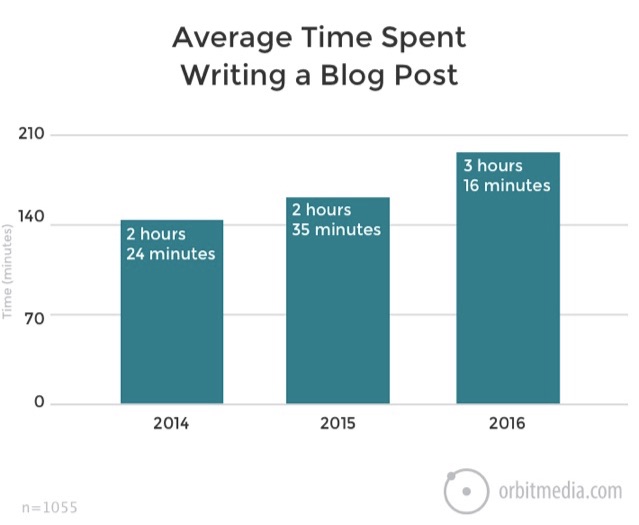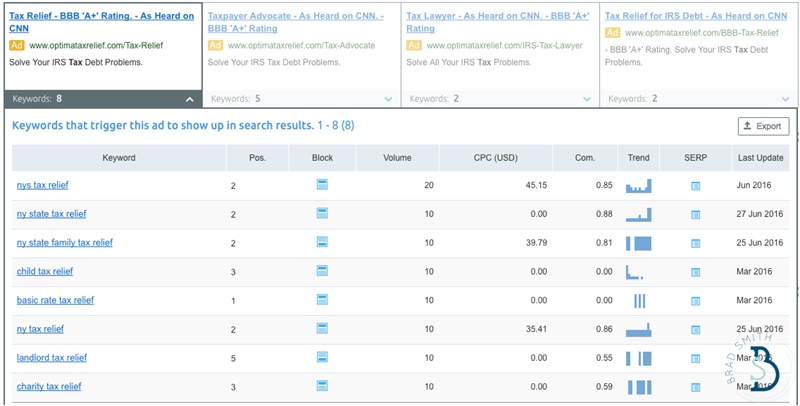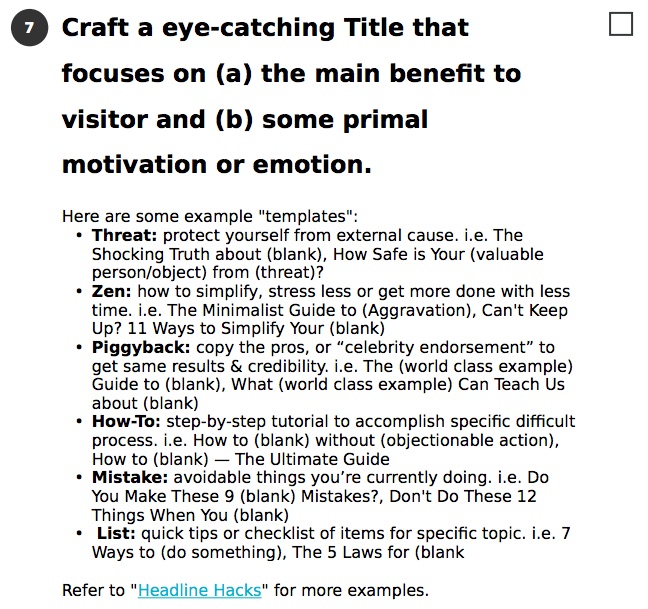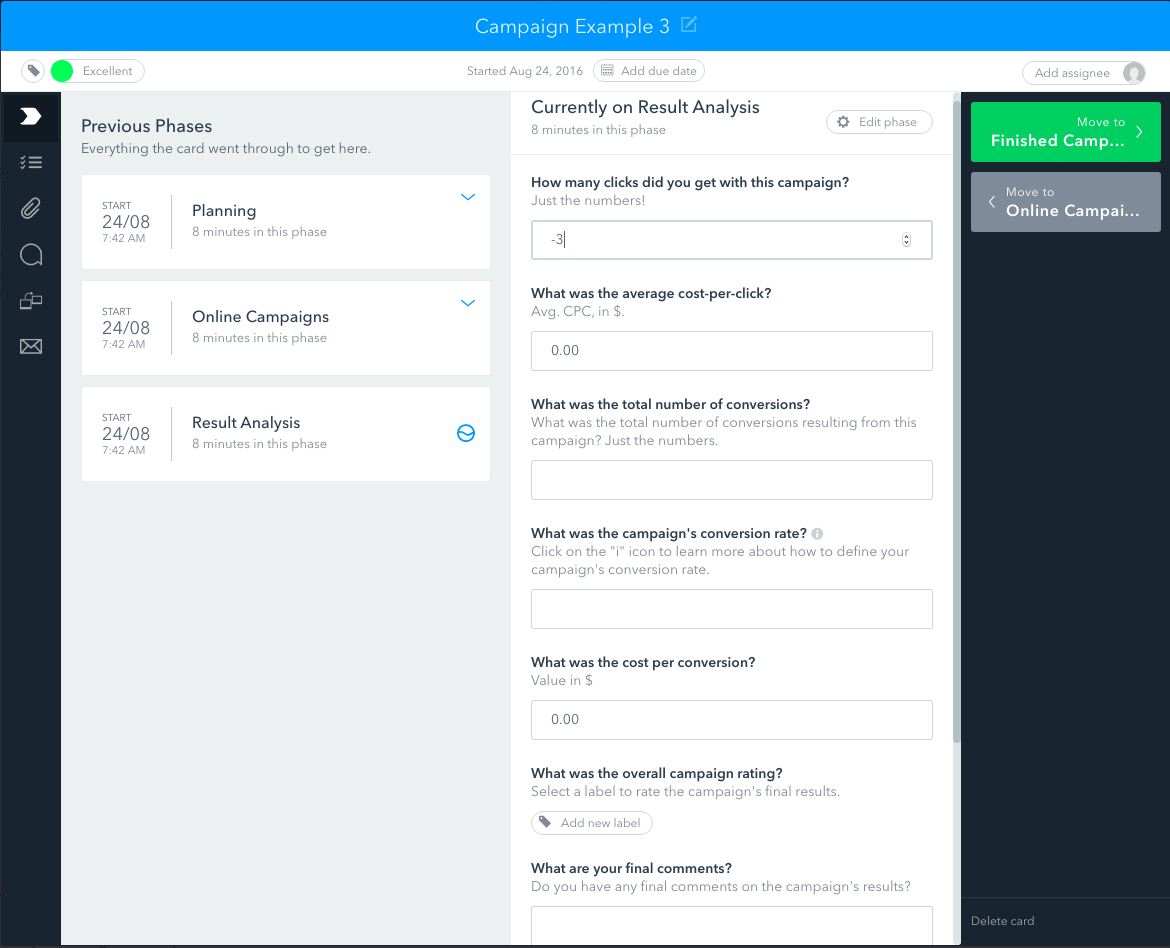Israeli researchers studied 200 of the best ads in 1999.
These were the top finalists and award winners, like the infamous “This is Your Brain on Drugs” campaign from years ago.
The most surprising thing? They weren’t ‘creative’.
89% of them could be classified into six ‘templates’, which were classified in the excellent Made to Stick.
The point?
Ideas aren’t in short supply today. Execution is.
The reason results aren’t kicking in like you expect is NOT because you’re missing some mythical growth hack. It’s because you’re not executing on the basics right in front of your face.
Here’s why, along with a few examples to get started.
The Escalating Content Marketing Arms Race
A 500-word blog post used take an hour or two to complete.
Problem? Nobody writes 500 words anymore. At least, not if they want results.
You know what it takes to get on the first page of Google today? 1,890 words. Thanks, Skyscrapers.
That’s backed up by excellent research from Orbit Media, whose survey results show that the average blog post is 1054 words long (19% longer than in 2015).
Which means, they take longer to write, too. Today’s average blog post takes 3 hours 16 minutes to write (26% increase over 2015).
Buffer has been spending a minimum of three hours on each post for years now. And some savvy marketers admit that they spend half-to-a-full day on one blog post.
The bar is high.
And it keeps getting higher.
We haven’t even touched on the quantity: two million blog posts published each day. (And that was already a few years ago in 2015!)
Not seeing results from blogging?
How much time are you spending on each post?
Most likely, it’s not enough. Because you’re too busy responding to client calls, boss’s emails, memes on Slack, or scouring Inbound.org and Growth Hackers for the latest silver bullet hack that will deliver instant success.
When the brutal truth is that the only way out, is the one path in front of you.
It’s the most obvious, yet least exciting option.
Don’t look at what those Inbound & Growth Hackers posts say. Look at what they’re doing.
The depth. The insight (based on real-world experience). The multimedia. And then replicate it.
In today’s world, average doesn’t cut it. Only exceptional gets rankings, traffic, leads, and sales.
Trouble is, there ain’t anymore hours in the day.
How are you supposed to do it?
The AdWords Quality Score
Back in the old days, AdWords was more of a straight-forward auction.
That meant anyone could bid as much as they wanted on whichever keyphrases they chose in order to generate more results.
But that came at the expense of relevance for us consumers.
Now, the Google’s ain’t dumb. So they introduced a few tweaks to the system, including the Quality Score.
Today it’s an approximation for how your results should perform in aggregate. And one of the things it looks for, is message match.
That is, an alignment between:
- What someone’s searching for
- The ads they see (that you create)
- And the landing page they visit upon clicking
Long story short, this little guy plays a role in determining what you pay. The higher that number goes, based on a better ‘alignment’ between those three variables above (and a few more), the less you pay to drive traffic, net leads, and close sales.
Facebook’s got a similar metric, the Relevance Score, that says even a little boost in engagement (of 1%) is enough to deliver a 5% cost reduction!
Here’s the best news.
Quality Scores aren’t secret. Unlike Google’s organic algorithm, they tell you pretty much how it’s determined. Which means it should be a straightforward path to fixing.
You simply identify a few popular campaigns that are underperforming…
Spin those out into their own campaigns to improve the keywords you’re targeting, the ads you’re showing, and the landing pages visitors are finding, in order to increase their overall experience.
Sure. There’s a little more involved. But that’s the basics. And just making those basic improvements can increase AdWords lead conversion rates 900% while also dropping Cost Per Conversions 99%.
No tricks or hacks. Just execution.
Look.
It’s easy. All the information is out there in the open.
Take ad copy specifically.
Increase Ad Performance & Slash Your Time in Half by Systemizing Ad Copy Writing
These are a B– to write.
Only a few short characters. You’d think it’d be easy.
But you sit there and stare at a blank screen for twenty minutes before ever writing down a single headline variation or two.
Here’s the secret though.
Even if you’ve worked in this space for years, you have no idea how it’s going to work. You kinda do, but no guarantees in this game.
So relax. Use a system.
Digital Marketer’s Ad Grid is one of the best ‘frameworks’ to base your ad writing.
At the top of a grid, list out your customer personas. On the left, just simply copy-and-paste what they’re already spoon-feeding you: different proven ‘hooks’ that each tug at your prospect’s emotional, lizard brain telling them WHY they should care (to click, sign up, or change their ways).
We’re not going into tactics here. But we don’t have to. It’s all there in that article. One of the keepers to follow and rip off (or emulate).
Now, ad writing should be easy. The hooks and messaging are in place for each segment or persona. Obviously adapted depending on the industry you’re working in.
Let’s use an example from my friends, The Yes Girls.
You can try the ‘zen’ approach, simplifying the life of consumers so they don’t have to worry ‘bout a thing.

Or you can go the complete opposite route, focusing instead on helping people protect themselves from mistakes they’re making.
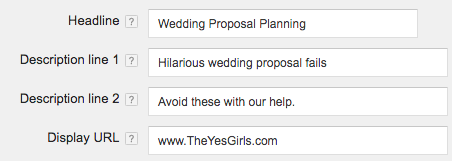
This gets even easier in some highly formulaic industries.
Take local businesses. People look for these companies by searching for: [Location] + [Service]. So guess what keyphrases to choose, what to write in your ads, and what to put smack-dab on the middle of your landing page headline?
In these cases you don’t even have to reinvent the wheel. Click-through rate busting ads aren’t far away. It’s just a matter of writing a few variations (based on a solid framework or process) and then letting the winner surface to the top after a few days-to-a-week.
How to Create Nimble Marketing Processes that Can Adapt & Change On-the-Fly
Processes are mechanical. They’re routine. And they kinda suck to write.
But they’re the only way out.
If you (a) can’t work anymore hours in a day without dropping dead or getting divorced, and (b) need to UP your execution game so that results come quicker for clients and bosses, there’s only one solution my friend.
Rising PPC star, Jonathan Dane, admitted to almost quitting three times in the first year after starting Klientboost.
Then they systematically improved parts of the business (heavily influenced by The E-Myth) and are now doing over $3 million a year (in only about three years).
Ok. So where to start.
Step #1. Reverse-Engineer a Step-by-Step Process You Intuitively Already Do on a Daily Basis
It’s tempting to org-chart the hell out of your biz, but it’ll only stress you out more. It’s too much. Too big of a chunk.
Take something small. Like PPC ad writing. Or blog content.
And from A to Z, list out the steps you already take. OR, the steps you’d like to take based on the excellent example you see somewhere online already. Whatever. Doesn’t matter.
Here, I’ll even give you an internal example.
Step 7 of our “How to Create a Blog Post” process is about creating headlines. And I just straight stole the answers from Jon Morrow’s Headline Hacks – because it’s amazing, simple and straightforward. Someone with little-to-no blogging skillz can follow one of these and churn out a not-terrible headline on their first try.
Step #2. Visually Map the ‘Transitions’ that Need to Take Place After Completing One Action Before Starting Another
Zooming into a specific step or activity helps you see how tired, boring-old processes can deliver the goods.
But the real benefit in comes when you see the transitions; how you go from completing one thing to starting the next.
Mind mapping can help you visualize how all of these pieces fit together. XMind is one, but certainly not the only, option.
Here’s another personal example of the customer journey, along with How and What and Who from our side will align with each step.
So peeps complete Steps 1, 2, and 3. Great. Then what?
Processes create systems. And the best systems are a collection of subsystems. I think I just plagiarized that from Work the System.
The point, though, is not to lose sight of the forest for the trees.
Step #3. Make Processes Actionable & Accountable with Intuitive Tools that Reinforce the Actions You Want
Next step is to make this idea come to life. A Word doc is great… for getting lost on your hard drive somewhere.
But the next step is to use some tool – again, doesn’t matter which – to capture and manage and assign and enforce the system you just created.
My favorite is Pipefy. It’s amazing. Time-consuming to get right. But powerful once you get workflows up-and-running which allow other team members or contractors to step into various parts and do the job 80% as well as you.
Because that’s the goal at first. 80%. Transferring your years of experience and pattern matching and hard lessons isn’t easy. But over time you’ll learn how to create a process that enforces good habits and helps people bypass that learning curve.
Pipefy even has a few templates you can import to get started. Including, an SEM management one. How apropos.
The individual step (in the image above) can’t be completed until someone fills out each text box with an answer.
Once that’s done, you move onto the next step which will then bring up a new list of instructions, video tutorials, image examples, and more for the next person to know exactly what’s expected of them.
Which brings us to people.
Step #4. Processes Can Make Good People Better; Empowering Novices to Perform like Experts
Marketers live in a results-driven business. The pressure’s on.
One study says working in media is almost as stressful as flying a plane or cutting into people!
Which means we usually have a short leash (and shorter temper) when it comes to those around us. If they can’t keep up, they’re not around long. #realtalk
Good people are hard to find. The ones who can read your thoughts and are already a step ahead.
These people should also be incredibly cheap in the grand scheme of things. Like, you can’t afford not too, cheap. That’s meant in a rational businessperson, not insensitive, way. They’re an asset, not an expense.
But they can’t be thrown into the deep end. Even contractors, who’re subject-level experts, need help understanding what you’re thinking and what you’re looking for. They won’t get it on the first try.
So whether you’re hiring new marketers or working with outside people (I’ve had great experiences so far with Worldwide101 ← and I don’t receive anything for saying that), the best thing you can do is plug them into a process.
People shouldn’t cause you to take more time out of your already busy schedule. They should add back chunks of time, while multiplying and leveraging your ability to execute.
But that’s only possible if they know exactly, step-by-step, what to do and why.
Conclusion
I hope this doesn’t come off as preachy. That wasn’t the intent.
I’ve personally wasted (and continue to waste) countless hours reading, instead of doing.
Chances are, you’re similar. You already know what it takes, or where to find it.
And there’s only so many hours in the day. You can’t possibly put in anymore.
So piling on another ‘hack’ to your already overflowing to-do list isn’t going to help.
Bookmark it. Save it in Evernote. Someday/Maybe it. And revisit it later.
For now, focus on improving your processes to get vastly more done in less time.
Execution dictates results. Not hacks.
About the Author: Brad Smith is a marketing writer, agency partner, and creator of Copy Weekly, a free weekly copywriting newsletter for marketers & founders.

